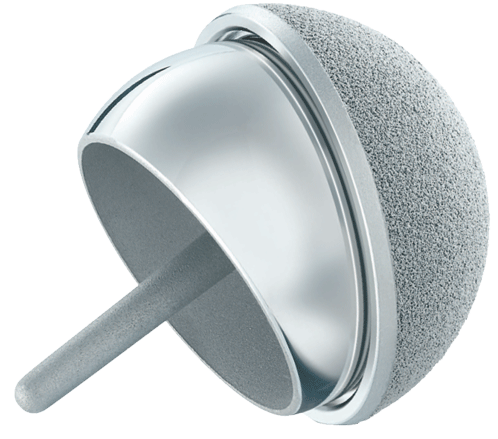I am currently working as a Postgraduate Researcher at the University of Leeds, where I am actively involved in research activities. Prior to this, I successfully completed my master's degree through the renowned Erasmus Mundus joint program, specializing in Tribology and Bachelor's degree in Mechanical Engineering from VTU in Belgaum, India. Further I handle the social media pages for Tribonet and I have my youtube channel Tribo Geek.
Bio-tribological Advancements in Articulating Interface of a Joint Implant
Table of Contents
Introduction
The articulating interface in artificial joints is crucial for enabling smooth motion, emphasizing the need for an optimal friction coefficient and wear resistance. Complications like excessive wear and aseptic loosening from inadequate tribological design, significantly impact the long-term performance of artificial joints. Thus, the improvement of the tribological performance of the articulating surface is a key focus in the field of bio-tribology for artificial joints.
Components in Articulating Interface
The articulating interface in artificial joints commonly falls into two categories: soft-on-hard and hard-on-hard combinations, utilizing materials like ultra-high molecular weight polyethylene (UHMWPE) as the “soft” component and cobalt-chromium alloys, titanium alloys, stainless steel, alumina, zirconia, and zirconia toughened alumina composite ceramics (ZTA) as the “hard” component. Due to its excellent tensile strength and impact resistance, UHMWPE is widely used but is a major source of wear and wear particles due to its softer nature.

Fig-1 Articulating component with the complete joint implant [1]
Structure and Properties
Various strategies have been proposed to enhance the wear resistance of UHMWPE, including highly cross-linked UHMWPE, which significantly improves wear resistance. Recent developments involve irradiated UHMWPE with increased cross-linking gamma irradiation, resulting in a decreased wear rate. Additionally, Vitamin E stabilization has been found to protect against the oxidation of cross-linked materials. These advancements aim to address the wear-related challenges in artificial joint components. It is important to note that the surface properties of the hard counter-face are significant as their asperities can potentially scratch the soft surface. To mitigate wear on the soft surface, various surface coatings are applied to the metallic counter-face. However, the long-term durability of these coatings requires further examination. Additionally, the design parameters of the articulating surface play crucial roles in determining friction behavior. For instance, a larger femoral head diameter results in a larger contact area and a longer sliding distance, posing a disadvantage in terms of wear. However, a larger femoral head may also benefit from hydrodynamic lubrication. Therefore, the actual wear performance is a delicate balance involving design parameters, lubrication, and surgical factors.
Type of contact
Two main hard-on-hard combinations for artificial joints are metal-on-metal and ceramic-on-ceramic. Metal-on-metal articulation initially exhibits low wear due to improved hydrodynamic lubrication, but this wear significantly increases under adverse conditions, leading to clinical failure. Ceramic-on-ceramic joints, widely used in artificial knee joints, have higher hardness and scratch resistance, maintaining a very low wear rate. However, squeaking, reported in 0.5% to 10% of cases, poses a challenge for elimination, and fracture risk, once a significant concern, is now much lower (0.001% to 0.021%) with improved design and manufacturing.

Fig-2 Types of material contacts in articulating interface
Future Research
A recent development in polyethylene materials is Ultra-low-wear polyethylene (ULWPE). This material features a highly linear structure, a narrow molecular weight distribution, and nearly no side chains. Wear testing has demonstrated outstanding wear properties compared to conventional Ultra-high-molecular-weight polyethylene (UHMWPE), showcasing the significant potential for applications in joint replacements.
Reference
[1] https://josephqueally.com/materials-used-hip-replacement/



Be the first to comment